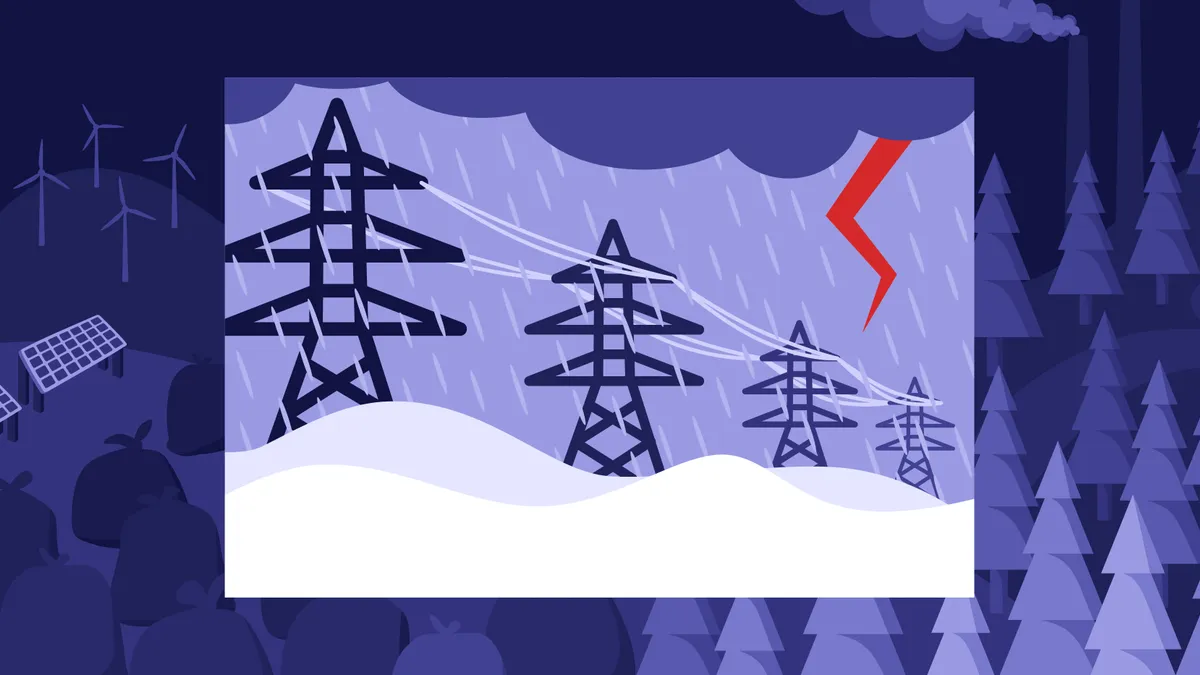The following is a contributed article by Stephanie Eyocko, the Department of Energy Solar Fellow at the Maryland Public Service Commission. The opinions expressed herein are solely those of Ms. Eyocko. They should not be attributed to their employer.
The rolling outages that plunged millions of Texans into darkness are raising big questions about how to protect the grid — and how to pay for it.
The outages occurred despite the structure of Texas power markets, which financially incentivize generation owners to stay online during grid stress, and ample early warning for grid operators. In 2011, a similar freeze took almost 200 power plants offline, sparking a review from the North American Electric Reliability Corporation, which blamed "failure to properly prepare or 'winterize' the generation facilities for cold temperatures."
This is not just about Texas. The Midcontinent Independent System Operator (MISO) asked several utilities to administer rolling blackouts to prevent a more extensive, prolonged power outage that could have severely affected the reliability of the power grid. The Southwest Power Pool (SPP) fell 641 MW short of the 43,661 MW of power required to meet their electricity peak — causing its first rolling blackouts in its history.
The southern deep freeze is just the latest climate change related event to roil the U.S. economy. The past decade, the United States has experienced at least one hundred and thirty four climate change related events with twenty-three causing rolling blackouts. We know that climate change is bringing not just overall warming, but also more extreme temperatures at both ends and without enhanced planning, events like these will become even more common, and the human and economic costs even higher.
Utilities are not on track. Many still calculate climate risks with the idea that the worst effects are still decades in the future, not on their doorstep today. Pacific Gas & Electric, for example, estimates the cost of wildfire mitigation at $11.7 billion but places the timeframe at 10-25 years, though California has been experiencing ravaging wildfires for over a decade. Xcel Energy places an unknown timeline for "changes in precipitation," risk, though it plans to shut down a coal-fired power plant down for concern of water scarcity.
A key reason utilities don't plan better is cost. In the regulatory world, we know when a utility plans for a scenario, it has to pay for it — charging its customers for the upgrades needed to keep power reliable.
For decades, many utilities across the country put off that maintenance, leaving a grid that's already teetering as climate change boosts severe weather risks. Seventy percent of the grid's transmission lines and power transformers are over 25 years old, 60% of circuit breakers are thirty years or older, seventy percent of transmission lines are 25 years or older, and the average age of power plants is 29 years old. In PG&E's case, the transmission line that sparked the deadly Camp Fire was 97 years old.
Upgrading the U.S. power grid to handle these threats is a gargantuan project on its own. But it's only half the equation for the utility sector. As they harden the grid, utilities must also "green" it — replacing the brunt of its generation fleet with low- or zero-carbon sources.
That in itself is a massive task. To hit President Joe Biden's goal of a carbon-free electricity sector in 2035, the U.S. would need to increase its annual deployment of clean energy technology by more than six times the historic rates.
Typically, utilities would charge their customers for the costs of these upgrades, spreading them out over decades to limit the short term hike in bills. But utility consumers aren't ready to shoulder the burden of these dual transformations.
Already, nearly one-third of U.S. households reported facing a challenge in paying energy bills or sustaining adequate heating and cooling in their home in 2015. Two-thirds of low-income households experience high energy burdens, meaning more than 6% of household income is spent on utility bills — while 13% of households have a "severe" energy burden, where more than 10% of income is spent on utilities. These inequalities are exacerbated by other inequalities such as high poverty rates and poor housing.
Federal funding is what's needed to harden the grid as we green it. Just as it did during the electrification programs of the New Deal, the federal government can finance a national infrastructure upgrade program that will weatherize the grid and help utilities upgrade it for the switch to renewable energy.
The program need not be a federal takeover of the power system. Congress could appropriate funds for the Department of Energy to provide technical and financial assistance to states and utilities looking to upgrade their grids. Building new power lines and upgrading distribution systems could be part of work programs for those who have lost their jobs in the fossil fuel economy. And those programs could be funded in part by carbon taxes or other fees on polluters, or tariffs on high-carbon imports from other countries.
While the policy options are numerous, one thing is clear. U.S. electricity consumers cannot shoulder the cost of the dual transformation to a green, hardened grid alone. The federal government must step in with funding to assist this transition, or we can expect many more nights without power in the world's richest nation.






















